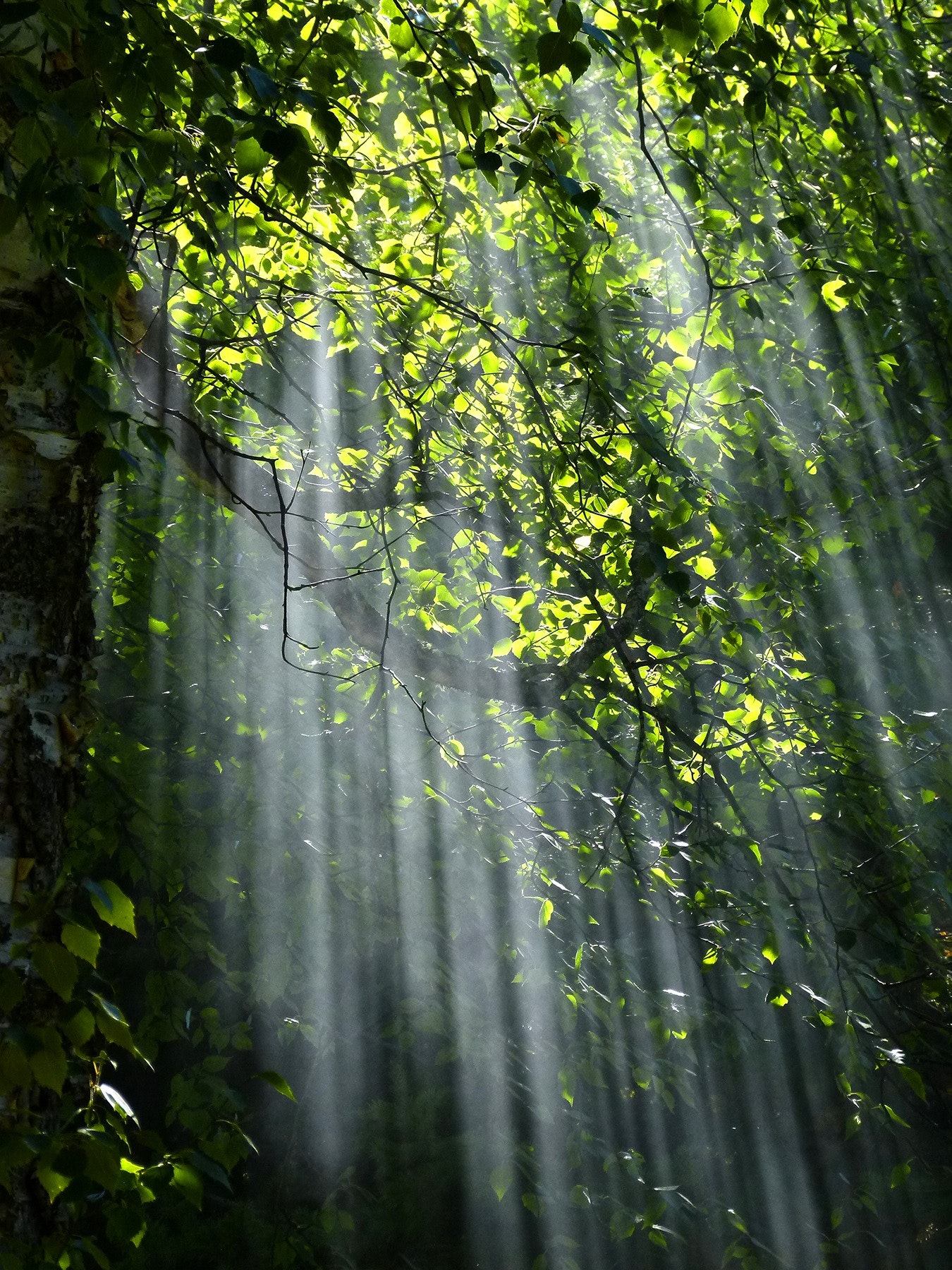
A Microclimate
Is defined as a smaller area that has different climatic conditions from the larger surrounding area.
These conditions are mainly light, temperature, moisture/humidity. This could be influenced by a variety of factors, natural or engineered by humans. Rainfall, bodies of water, mountain ranges, elevation, and trees are some of the natural factors that will influence microclimates. Some human-influenced factors are buildings, vast bodies of roads and concrete, and the removal of trees and forests.
Understanding what kind of microclimate is needed to support your garden is the next course of action (soil is first) to being a successful desert gardener. Our harsh summer temperatures make it necessary to protect some plants from the heat in order for them to survive. Our winters are mild compared to most climates, but depending on what you are growing, you may still need to consider creating the right microclimate to protect plants from the cold and even frost.
Step 1 – Identify Your Gardening Location
Consider the property where you will be gardening, and ask yourself the following questions:
Lot Size
Is it a large or small property? Acreage properties have different considerations compared with 5,000 square foot lots.
HOA
Perhaps you have a smaller yard with an HOA. It will be important to know if there are any restrictions per the HOA rules and regulations.
Your Plans
How do you want to use that space to garden?
Step 2 – Identify existing conditions
When considering microclimates in your yard, take a look at what is already there.
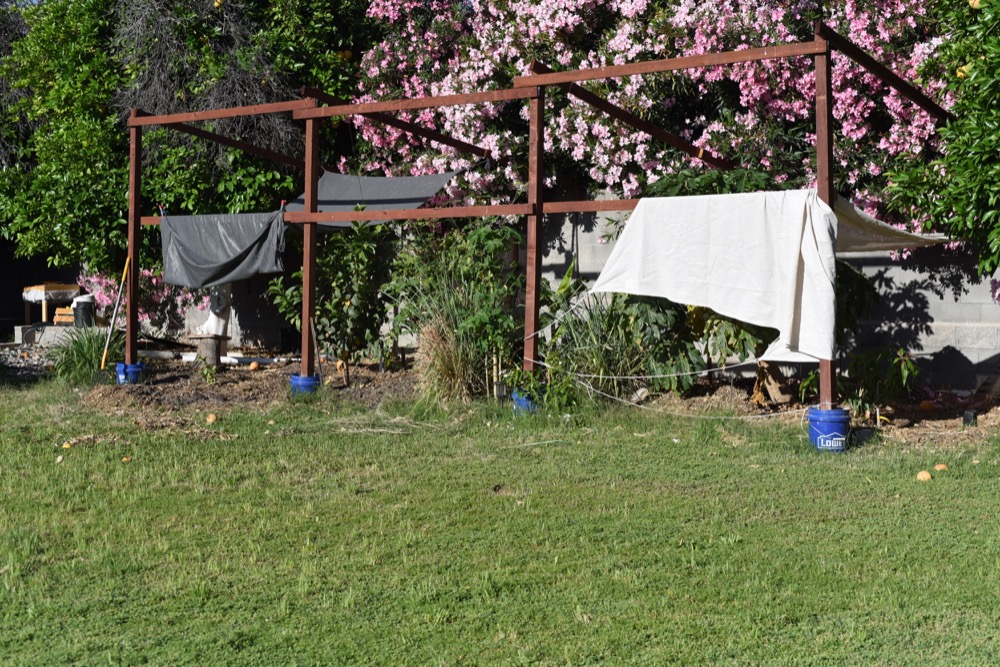
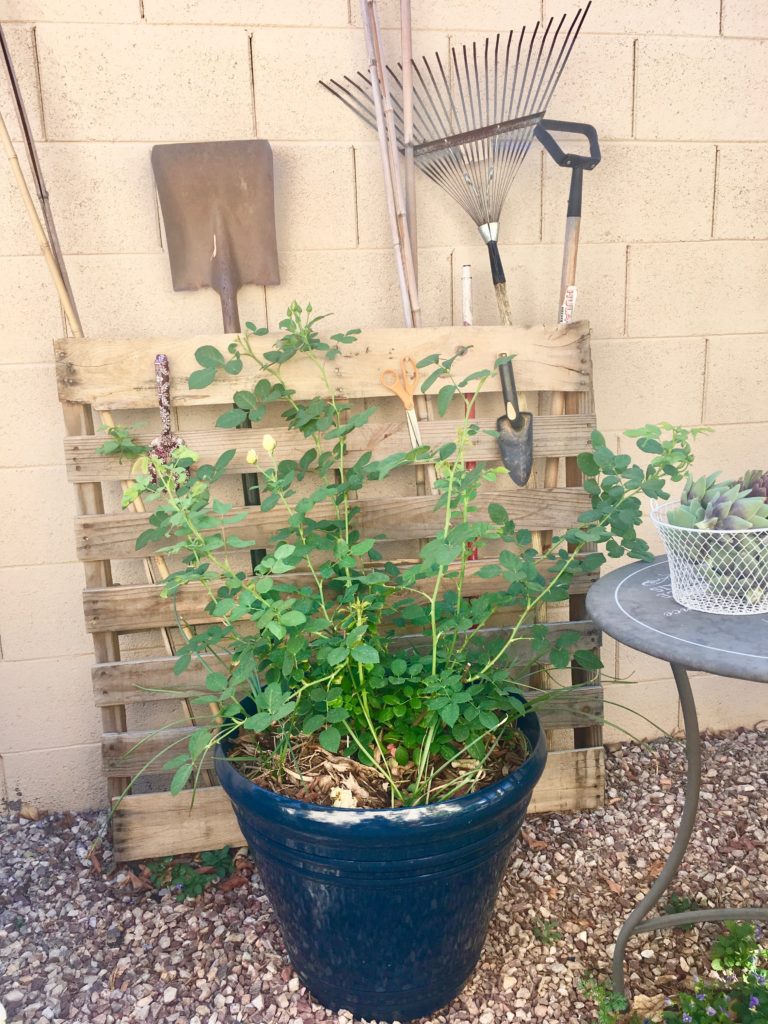
Block Walls
Block walls and fencing, trees and even your house walls will create some shade at different parts of the day, depending on where they are located. Get familiar with how these structures may provide a shaded or protected area in your yard during both winter and summer.
Some walls may not be beneficial during certain parts of the year. For example, a north facing the wall at Solitary Bee gardens casts a four-foot deep shadow all winter long. This is not necessarily a bad thing, but knowing this will helps to plan a garden better. It is a poor area for a winter vegetable garden that will need sunshine, but it is great spot to plant trees that require winter chill hours like apples, the peach family trees (Prunus), grapes, mulberries, and figs.
Tips for using walls
Standing pallets upright against the wall and then trellising a vine, like grapes, is a free and effective way of buffering the heat from the wall. The added benefits of grapes is that they are deciduous, and will lose their leaves in winter allowing more sun to the areas that are shaded by leaf cover in the summer.
Often times, planting a summer garden close to a west wall or fence could work well. As the summer sun moves, this area closest to the wall will be first to get shade during the summer day. It will also get a decent amount of sun in winter. However, the west wall could also give off a lot of heat. Use something to buffer this heat.
Existing Mature Trees
Mature trees also create microclimates under their canopies in terms of light, moisture, and wind blocking.
The northeast corner of Ardenelli Farms is covered by six mature grapefruit trees that cast constant shade in that area. The ground is almost always damp and the temperature is 3-5 degrees cooler than the shaded patio by the house and can be up to 20 degrees cooler than in the sun.
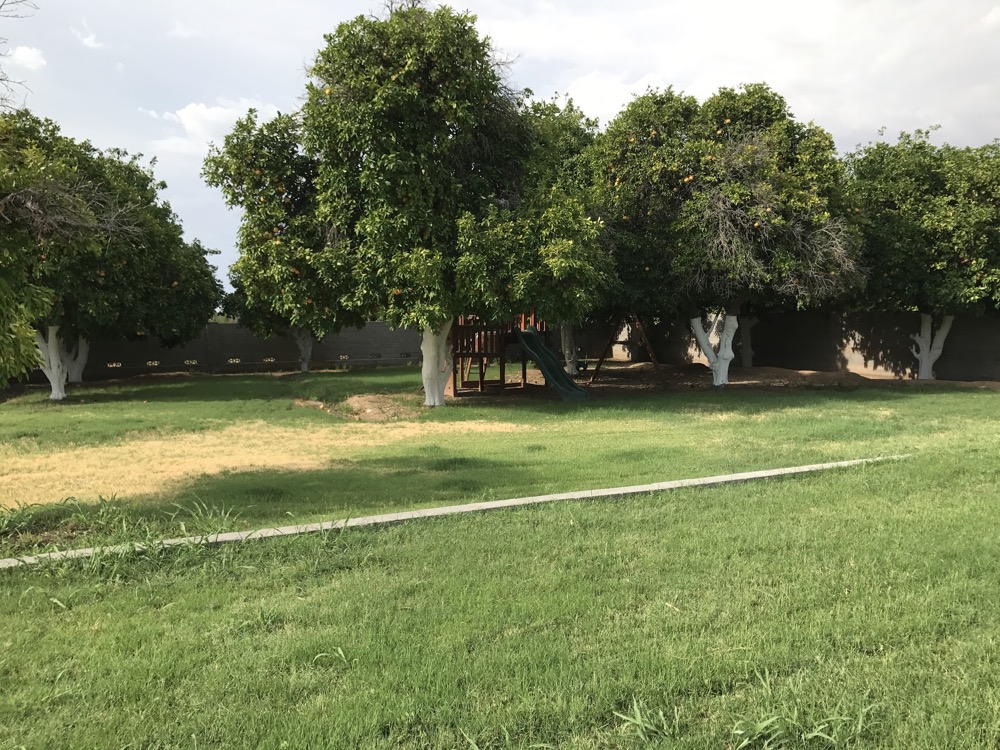
NOTE: The amount of sun plants will get affects the rate at which they grow
A great example is carrots. Often times gardeners in the desert complain that their carrots take much longer to mature than what the seed packet states. There are two reasons related to climate.
Firstly we plant carrots during Fall, while everyone else plants in Spring. We have decreasing temps and they have increasing temperatures.
Secondly, this also means we are planting as the days get shorter and the number of sunny hours is decreasing, while the opposite is true for Spring planting. Additionally, if they are planted in an area where they will be getting only four hours of winter sunshine versus six of Spring sunshine, the rate at which they grew is going to be greatly diminished compared to the seed packet information.
Other factors to consider are how materials used in the area will be impacted by the weather. Solitary Bee Gardens was started on a small side yard. It had a rock surface that baked in the heat and gave that heat back off in the evenings. It had a baking west wall and reflective heat of the house wall. All in all, there were some very challenging conditions. Accounting for these factors was important in planning how to add additional protection from the elements.
Step 3 – Identify the microclimates you need
You will want to take into consideration the amount of time you can dedicate to your gardening projects, preparation required, and your budget. Avocados, for example, will require a lot of care both winter and summer and may not be the most practical for some gardeners.
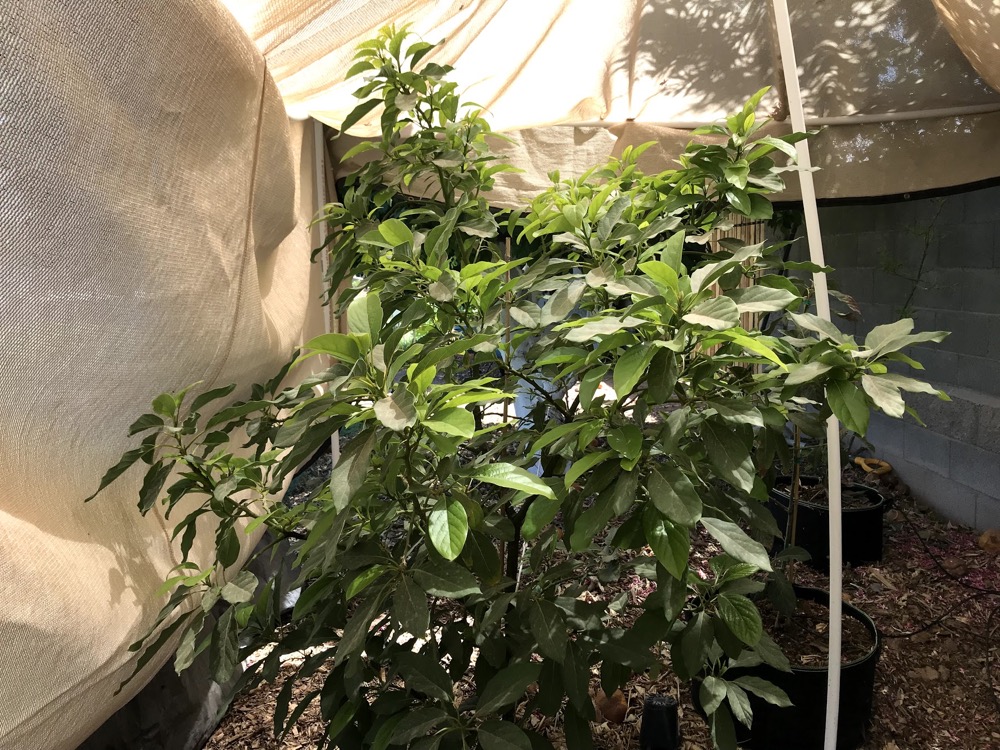
Grouping Plants by Need
Consider grouping plants with similar needs in the same area. If you really want to grow tropical trees like mangoes, it would be better to plant them all in the same area where a structure can be built to give them the correct shade in summer and protection from the cold in winter, rather than dotting them throughout the landscape.
A simple way to determine what microclimate is needed by a plant is to research their natural habitat.
Take bananas for example. In banana groves, young bananas are often shaded by the larger plants, but they eventually grow into the sun.
It is also important to consider what the effect the mature tree will have on its surroundings. Is there good space for it to grow into that area? The mature tree will also shade and create a different microclimate in your yard, will this be acceptable or negatively impact other plants? Perhaps you would like papayas. Planting them under a vitex/chaste tree may seem like the perfect idea since the tree will provide the perfect dappled light baby papayas need. However, once the papayas are grown, they may look very unattractive in that spot. A better solution would be to work with a plant that could provide a temporary microclimate. Hollyhocks will provide the perfect screen from the harsh west sun, while the papaya is small, but later can be removed once the papaya no longer needs the protection.
Humidity
Humidity will also play a big role in creating microclimates. For example, tropical plants naturally grow where there is a lot of rain and humidity. Keeping tropicals close together helps to maintain slightly higher humidity levels since there is less evaporation caused by sunlight hitting the ground. The trees will protect one and another from the elements and this kind of planting also allows for you to setup additional systems to create humidity.
Step 4 – Creating Microclimates
Microclimates can be created with trees and plants or with man-made structures. We will be sharing how we made different structures at both Solitary Bee gardens and Ardenelli farms in our posts that will specifically cover Summer and Winter Microclimates. They are easy, budget-friendly structures that are also very adaptable to different seasonal conditions. For now, we will be sharing how to use trees.
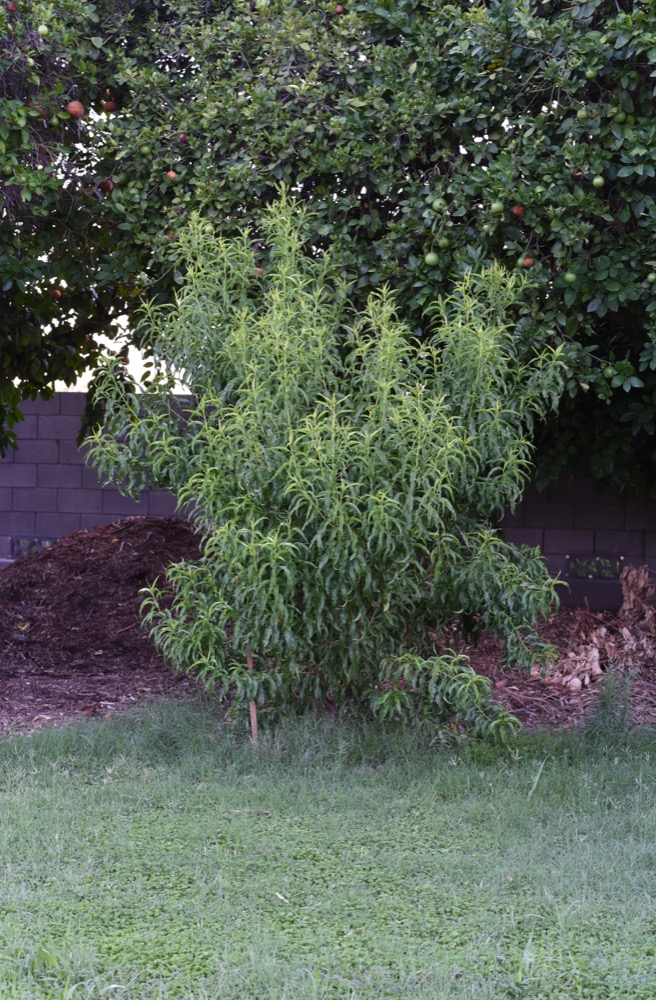
Creating Microclimates with Trees
Again, considering the size of your yard and what a fully grown tree will look like is important. Very large trees may provide lovely shade, but may not always be the best option for a small yard.
Palo Verdes, mesquites and sissos are often used in the wrong spaces here. They grow fast, need little water and initially seem like a great option. Palo Verdes, however, are really weak in the backyard and often blow over in strong monsoon winds. Sisso’s have extremely invasive roots, that cause damage to block walls, pools, and foundations. It will affect structures and vegetation in your neighbor’s yard as well as yours. Additionally, they send up new trees from seeds and roots everywhere! Mesquites are no better! While considered drought tolerant, they love water and roots will easily spread following drip irrigation in your garden beds, raised beds, and your neighbor’s yard too. They have even grown up into fabric grow bags to get to the water. However, on larger acreage, these trees work well away from any structures and will provide shade to animals, as well as habitat for smaller critters.
Great Trees for Microclimates
We’ve written a whole article on great trees for creating microclimates in our climate, and we’re constantly updating it!
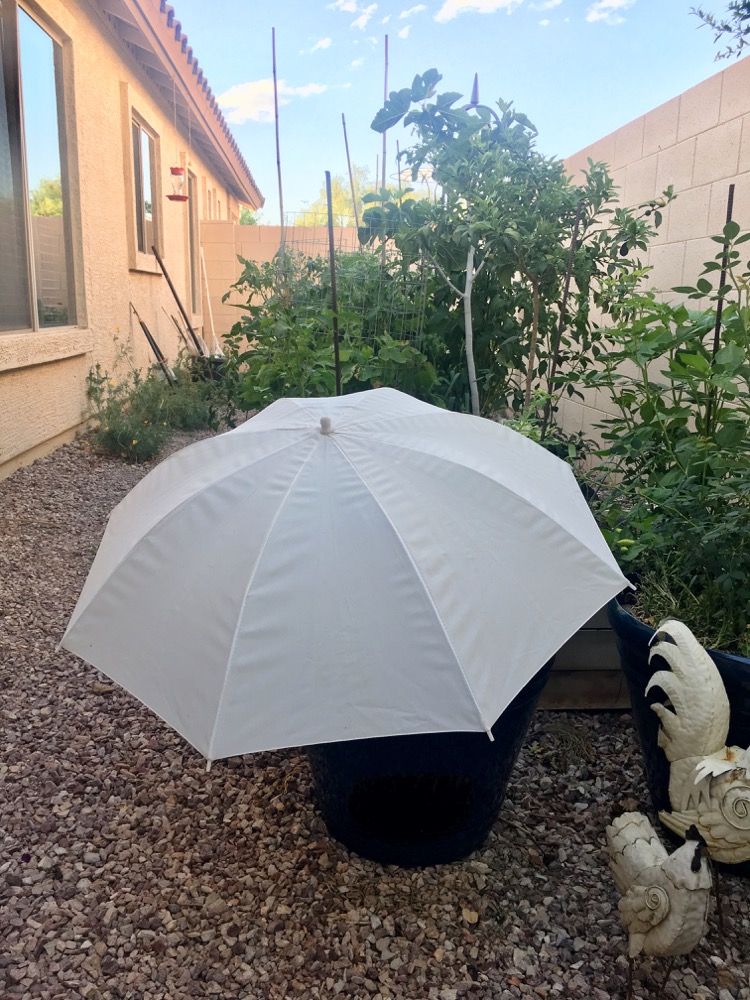
Mini Microclimates
Some times smaller areas in the garden may require protection from the elements. We still consider this creating a microclimate.
Here are some quick and easy tips to help with those smaller areas.
Large
Umbrellas
Large umbrellas work well tilted to screen plants from the West Sun.
There are usually great deals on umbrellas at Amazon, Lowe’s or at Costco.
At Solitary Bee Gardens, this has been used to protect roses, potted trees, and tomatoes.
Burlap
Burlap is an inexpensive and quick option for temporary screening.
The open weave allows for dappled shape.
They would work well attached to some supports to shade tomatoes, squashes, and other veggies during the hot summer months.
Mini Photography Umbrellas
This seems like an unusual idea but it works brilliantly since their purpose is to filter the sun. Use to shade strawberry beds, arugula, young seedlings, and more. They will blow off in strong winds, so secure well in the ground. The sun is harsh and will not be kind to them, they last a season or two before they will need to be replaced. They also work to keep off frosts from crops like lettuce in the winter
Plant Under Taller Plants
Large veggies like okra and corn offer shade to others like squashes and melons. A bed planted out with some garlic in October, but with specific spacing left for spring tomato seedlings and a few strawberry plants, is a great example of good companion planting. The garlic gets lovely winter and spring sun, but both the garlic and the strawberries get dappled shade by late April and May, as the tomato plants get much taller. This is also when temperatures climb into the high nineties to low hundreds, and the garlic and strawberries will really benefit from some shade.
Gardening Consults
If you need additional help with creating microclimates in your yard, consider our garden consulting service.

